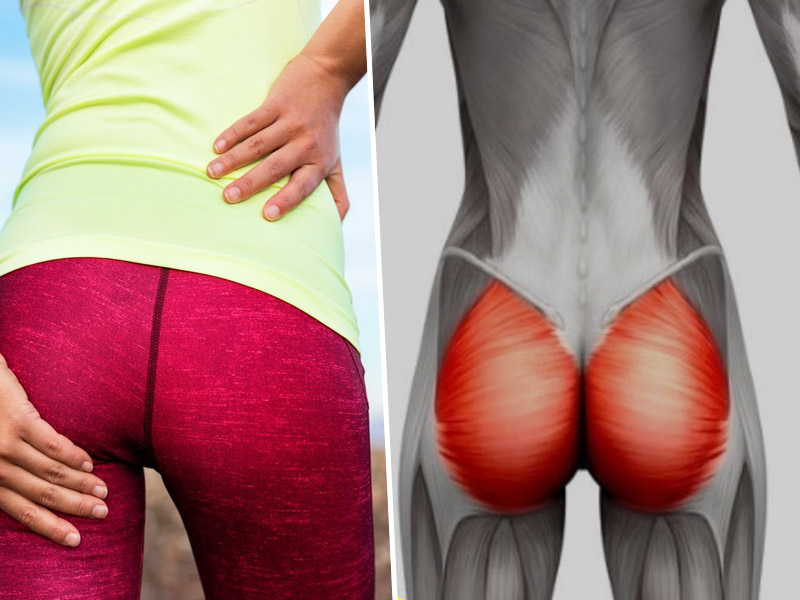
We spend most of our times sitting rather than anything else. Majority of people have work that involved sitting for long hours and hence the body does not get enough amount of activity between this period. Sometimes you must have noticed that you lose some sensation and start to feel numb. This situation is called dead butt syndrome or gluteal amnesia. This syndrome involves having problems with pelvis and keeping right alignment of the body. Today we will know about dead butt syndrome and conditions affecting it.
Table of Content:-
What is Dead Butt Syndrome?
Gluteal Amesia or dead butt syndrome is when you spend hours sitting in the similar position and thus get your buttocks numb, this condition is called Dead Butt Syndrome. However this is much complicated as it might look. According to Dr. Rajan Lal Mehta, Consultant Orthopaedist from Nav Bharat Hospital, Kanpur, and dead butt syndrome is a problem related to medius tendionpathy. It is a technical term which is referred in this condition. DBS is a term used when the muscles around glutes forget their function and purpose, thus creating trouble while standing up or moving in the correct alignment. An easy way to prevent this problem is to move more often and sitting less for long hours.

Symptoms of Dead Butt Syndrome
Sitting for long hours without taking break or walking can cause numbness in the glutes. It can also become a little sore. There are some major symptoms that can be easily understood by how the body is reacting to normal routine. Here are some symptoms you must be aware of-
- Numbness in glutes
- Sore buttocks or uneasiness
- Disproportionate body alignment
- Pain in the buttock and pelvis region
- Loss of strength in glutes
- Difficulty in climbing up the stairs
- Stiffness in one or both the buttocks
- Feels like sciatica
- Weakness in hip flexors if it is not treated
This pain and problems associated with buttocks can keep on increasing if measures are not taken to stop the dead butt syndrome. It is not hard to control this syndrome and treat it if right measures and exercises are done in the initial phase.
Effect of Dead Butt Syndrome
Dead butt syndrome can lead to inflammation in hip bursa. It is a fluid filled sac that is used to ease the movement within the hip joint. This condition also causes heavy pain around the pelvic region because the legs get inflamed which starts swelling.
People above the age of 40 years are more vulnerable to get affected by dead butt syndrome. However it affects almost everyone who does more of desk work or has sitting for long hours.

The pain spreads from pelvic region to lower legs slowly, if it is not given attention that may also result to gait problems and trigger situation. In some cases people who have poor posture or alignment while sitting or walking also face this syndrome. Dead butt syndrome can put strain on your knees, ankles and feet. This condition can also increase the risk of injuries and muscle pull in later stages.
Also Read- Know How Salt Water Gargles Can Be Beneficial To Overcome These 8 Health Problems
What Causes Dead Butt Syndrome?
The major cause of dead butt syndrome is sedentary lifestyle. People have jobs and work in which they need to sit for long hours at the same place. Inactive behaviour also enhances this syndrome because the gluteal muscle lengthens and your hip flexor tightens up.
Hip Flexors- These are the muscles that are present in the lower back through your pelvis region. They are responsible for your leg movement in the case when you walk, run or climb stairs or do any type of physical activity. When these flexors aren’t stretched, then it causes dead butt syndrome.

Leaving your hip flexors to tighten up makes the gluteal muscles inflammatory. Therefore it is important for your muscles to keep working so as to remain active. Gluteal Medias where the main affect occurs are the smaller muscles present in the buttocks. This along with tendons surrounding the area goes numb in the initial impact of dead butt syndrome.
Also Read- 5 Lifestyle Habits To Sustain Knee Replacement Surgery
Who is at Risk for Gluteal Amnesia?
People above the age of 40 years in India face this issue more often, hence they are at high risk of falling for this syndrome.
People who have long desk jobs and sitting work are at risk for DBS
Interestingly, athletes can also face this syndrome in their resting period. Once the body and muscles get used to the workout and intense activity, resting for long phases with minimal physical activity can also lead to dead butt syndrome. This is also applicable for dancers and gymnasts.
Read More Articles on Other Diseases
Picture Credits- freepik.com, pexels.com
Also watch this video
How we keep this article up to date:
We work with experts and keep a close eye on the latest in health and wellness. Whenever there is a new research or helpful information, we update our articles with accurate and useful advice.
Current Version